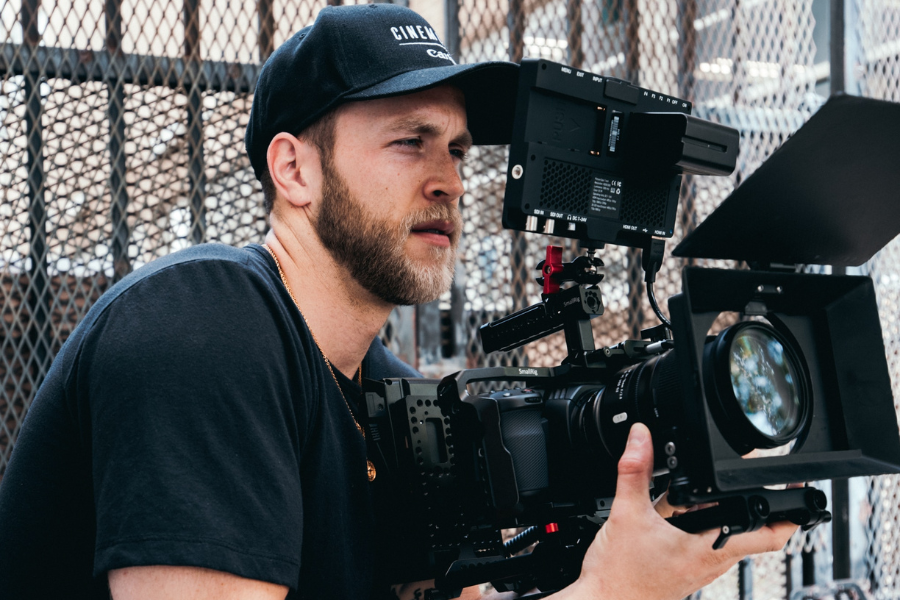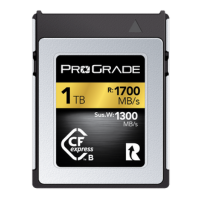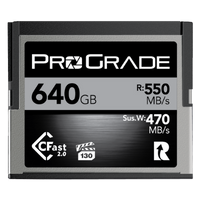Welcome to the realm of advanced multi-camera videography, a world where video production becomes a captivating symphony of visuals, where storytelling takes on new dimensions, and where every frame is an artistic masterpiece.
In this guide, we will delve deep into the art of multi-camera videography, equipping you with the knowledge and skills to take your productions to the next level. From strategic camera placement and seamless synchronization to effective communication and expert post-production strategies, we will guide you through the process step-by-step.
Enjoy!
Recapping the Basics: Principles of Multi-Camera Shoots
Before jumping into advanced multi-camera videography techniques, let’s take a moment to refresh our understanding of the basic principles that lay the foundation for successful multi-camera setups. These principles not only serve as a reminder for seasoned videographers but also provide crucial knowledge for those new to the world of multi-camera shoots. Let’s recap four main fundamental concepts:
1. The 180-Degree Rule
The 180-degree rule is a guideline that ensures consistent spatial relationships between subjects in a scene. It suggests maintaining an imaginary line, known as the “action line” or “axis of action,” along which the cameras are placed. By adhering to this rule, you can create a sense of continuity and avoid confusing the viewer with jarring perspective shifts.
2. Shot Variation
Incorporating shot variation is essential for keeping your video visually engaging. Using different camera angles, focal lengths, and perspectives, you can capture the scene from multiple vantage points, adding depth and visual interest to your footage.
3. Synchronization
Achieving synchronization among multiple cameras is crucial for seamless editing and post-production. Ensure that all cameras have synchronized timecodes or use a common reference, such as a clapperboard, to mark the beginning of each take. This synchronization simplifies the process of aligning footage during editing.
4. Communication and Coordination
Effective communication among the camera operators, director, and crew is vital for a smooth multi-camera shoot. Establish clear signals or cues to coordinate camera movements and ensure everyone is on the same page regarding shot composition, timing, and camera changes.
Leveling Up: Advanced Techniques for Multi-Camera Videography
Now that you’ve visited the basic principles and reinforced the foundation of multi-camera videography, let’s get to the advanced techniques. These five advanced techniques require careful planning, coordination, and technical expertise. However, mastering them can elevate your multi-camera videography to new heights, enabling you to create visually stunning and captivating content that leaves a lasting impression on your audience.
1. Multi-Angle Storytelling
Instead of simply capturing the action from different perspectives, multi-angle storytelling involves strategically using multiple cameras to simultaneously convey different aspects of the story.
For example, when shooting a live music performance, focus one camera on the lead vocalist, another on the guitarist’s intricate solos, and a third on the crowd’s energetic reactions. Combining these angles during editing creates a dynamic and immersive viewing experience that enhances the narrative and engages the audience on multiple levels.
2. Dynamic Camera Movement
Incorporating dynamic camera movement adds energy and cinematic flair to your multi-camera shoots. Utilize techniques such as camera cranes, dollies, or even drones to capture sweeping, fluid movements.
For instance, in an outdoor event, you can use a drone to capture aerial shots that provide an expansive view of the field, seamlessly transitioning to ground-level shots as the action unfolds. These dynamic camera movements enhance the visual impact and bring a sense of dynamism to your footage.
3. Split-Screen Composition
The split-screen composition technique allows you to display multiple camera angles simultaneously in a single frame. This technique is particularly effective in interviews or dialogue-driven scenes, where you can visually emphasize the interactions between two or more individuals.
For example, during a debate, you can split the screen to show each participant’s reactions in real time, highlighting the intensity of the discussion. Split-screen composition adds visual interest, enhances storytelling, and fosters a deeper connection between the viewers and the subjects.
4. Seamless Camera Transitions
Mastering seamless camera transitions is a hallmark of advanced multi-camera videography. Instead of abrupt cuts, you can create smooth and visually appealing transitions between camera angles.
This technique is ideal for capturing scenes with continuous action, such as dance performances or sports competitions. By carefully choreographing camera movements and transitions, you can maintain a sense of flow and rhythm, ensuring the viewer remains fully immersed in the experience without distractions.
5. Picture-in-Picture (PiP) Overlay
The picture-in-picture overlay technique allows you to showcase multiple camera angles simultaneously within the main frame. This technique is useful when you want to provide a comprehensive view of the scene while emphasizing specific details.
For example, during a cooking demonstration, you can show the chef’s close-up shots in the main frame while overlaying secondary camera angles to highlight the precise techniques and ingredients being used. Picture-in-picture overlays enhance viewer comprehension and create a visually engaging viewing experience.
Essential Tools: Equipment and Software for Advanced Videography
Investing in the right equipment and software is crucial to enhancing your multi-camera videography capabilities. Remember, the specific videography equipment and videography software you choose should align with your production requirements, budget, and technical expertise. Also, make sure you research and test different options before making your final purchasing decisions. Here are some recommendations to consider based on different budgets and needs:
1. Remote Camera Control
Remote camera control expands the possibilities of multi-camera videography by allowing you to control and operate cameras wirelessly. These systems eliminate the need for physical access to the cameras, allowing you to make adjustments conveniently from a central control station. This is particularly valuable in scenarios where physical access to the camera is limited or risky, such as wildlife photography or live events. With remote camera control, you can place cameras strategically and adjust settings, framing, and focus remotely, ensuring you capture the desired shots without disturbing the subjects or the environment.
2. Monitoring and Playback
A dedicated monitoring setup is crucial for assessing the quality and framing of each camera angle during a multi-camera shoot. Consider investing in professional-grade monitors or using software solutions to view and monitor all camera feeds simultaneously. Additionally, having a reliable playback system to review and analyze footage is essential for making informed editing decisions.
3. Video Switchers and Mixers
Video switchers or mixers are essential for live multi-camera productions. These devices allow you to switch between camera feeds, apply transitions, and control the visual output in real time. Depending on your needs and budget, options range from hardware-based switchers like the Blackmagic Design ATEM Mini series to software-based solutions like vMix or OBS Studio.
4. Video Editing Software
You’ll need reliable video editing software to bring your multi-camera footage together and create a cohesive final product. Professional-grade options like Adobe Premiere Pro, Final Cut Pro, or DaVinci Resolve offer advanced features designed explicitly for multi-camera editing. These software tools provide efficient synchronization and multicam editing interfaces, all critical for speeding up your workflow.
Avoiding Pitfalls: Common Multi-Camera Videography Mistakes and How to Overcome Them
To improve your production quality with multi-camera videography, avoiding common mistakes that may negatively affect your results is essential. In this regard, here are some common pitfalls to steer clear of:
1. Inconsistent White Balance and Exposure
One common mistake is having inconsistent white balance and exposure across camera angles. This can create jarring shifts in color and brightness during editing. To overcome this, use manual white balance settings on all cameras and regularly check exposure levels. Additionally, consider using a color chart or reference monitor to ensure consistency across cameras. Finally, during post-production, advanced color grading techniques can help match the footage seamlessly.
2. Audio Sync Issues
Audio sync problems are common when using multiple cameras, especially when recording audio separately. To overcome this, use an external audio recorder with timecode synchronization capabilities. By syncing the timecode of the audio recorder with the cameras, you can easily align the audio tracks during post-production. In addition, advanced techniques like multicam audio synchronization in video editing software can further simplify the process.
3. Insufficient Coverage and Variety
Limited camera coverage and shot variety can result in a monotonous final edit. To avoid this, plan your shots carefully, ensuring you capture wide shots, close-ups, and different angles for each scene. In addition, advanced techniques like shot sequencing, utilizing multiple camera movements, and implementing creative shot transitions can add visual interest and engage your audience.
4. Missed Shots and Overlapping Coverage
Contrary to common belief, more cameras do not necessarily mean better coverage. Poor communication and coordination among the camera operators often lead to overlapping coverage and missed shots because of it. To overcome this, establish clear communication channels, such as using walkie-talkies or intercom systems, and designate a director or production assistant to coordinate the camera operators. Advanced procedures like camera cue sheets or visual cues can help synchronize camera movements and ensure smooth transitions between shots.
5. Poor Shot Composition and Framing
Another pitfall, often due to inadequate or missing communication, is inconsistent shot composition and framing. This can make the final edit look disjointed and unprofessional. To avoid this, establish clear shot lists and communicate with your camera operators to ensure consistent framing and composition. In addition, shot planning, previsualization, and utilizing camera guides or markers can help achieve consistent framing and maintain visual continuity.
Conclusion: Stepping Up Your Video Production Game with Advanced Techniques
Congratulations! You now have a solid understanding of advanced techniques for multi-camera videography. It’s now time to put your knowledge into action. Don’t be afraid to experiment and embrace the creative possibilities these techniques offer. From shot variation to creative camera movements and leveraging software tools, you have the power to tell compelling stories and capture visually stunning footage.
Remember, every project is an opportunity to push your skills further. Plan meticulously, communicate effectively, and pay attention to detail. Whether a small-scale production or a larger project, these advanced techniques will help you overcome challenges and deliver professional results.
So, step up your video production game with confidence and unleash your creativity. Embrace the artistry and technical aspects of multi-camera videography, and let your vision shine through each frame. Your next multi-camera shoot is waiting for you to make it a resounding success. Get out there and create amazing videos that leave a lasting impact.
Happy shooting!
Unleash Your Multi-Camera Vision with ProGrade Digital Memory Cards and Readers
In the world of multi-camera videography, your vision knows no bounds. The more cameras you wield, the more stories you capture, and the more footage you gather. This, in turn, translates to increased data transfer. So don’t let slow cards and readers hinder your creative flow. Upgrade to ProGrade Digital memory cards and workflow readers to eliminate bottlenecks and experience lightning-fast data write speeds and seamless transfer capabilities. From capturing breathtaking wedding scenes to a dynamic view of the live event, ProGrade Digital empowers you to push the boundaries of storytelling.





